This pepper is a strong liana from the rainforests of northern Laos. Its stems are woody. Its leaves are alternate, oblong, pointed at the tip and heart-shaped at the base. The inflorescence is a spike of about ten centimetres which is then covered with small blackberries.
Few people saw the vine itself, but in Louang Prabang, woody sections of about forty centimetres are sold at the market, where people tell you that they do not know the plant on the ground, which comes from the “jungle”. The stems of this pepper are in fact an essential condiment for o lam, a speciality of the north, a kind of stew with a very particular flavour. Of course, this condiment can also be used in other meat dishes such as carys.
In traditional medicine kheua sa khan is used for “excess phlegm”, i.e. excessive secretions “throughout the body”; it is also considered blood and menstrual medicine, and it is sometimes used in baths to reduce sweating.
Ce poivre est une forte liane des forêts humides du Nord Laos. Ses tiges sont ligneuses. Ses feuilles sont alternes, oblongues, pointues à leur extrémité et en forme de cœur à la base. L’inflorescence est un épi d’une dizaine de centimètres qui se couvre par la suite de petites baies noires.
Peu de personnes ont vu la liane elle-même, en revanche, à Louang Prabang, des tronçons ligneux d’une quarantaine de centimètres sont vendus au marché où l’on vous dit ne pas connaître la plante sur pied qui vient de la « jungle ». Les tiges de ce poivre sont en effet un condiment indispensable au o lam, spécialité du nord, sorte de ragoût à la saveur si particulière. On peut évidemment mettre ce condiment dans d’autres plats de viande comme les carys.
En médecine traditionnelle kheua sa khan est utilisé pour « les excès de phlegme », c’est à dire les sécrétions excessives « dans tout le corps »; elle est aussi considéré comme un médicament du sang et des règles; enfin, on la met parfois dans les bains pour réduire la sudation.
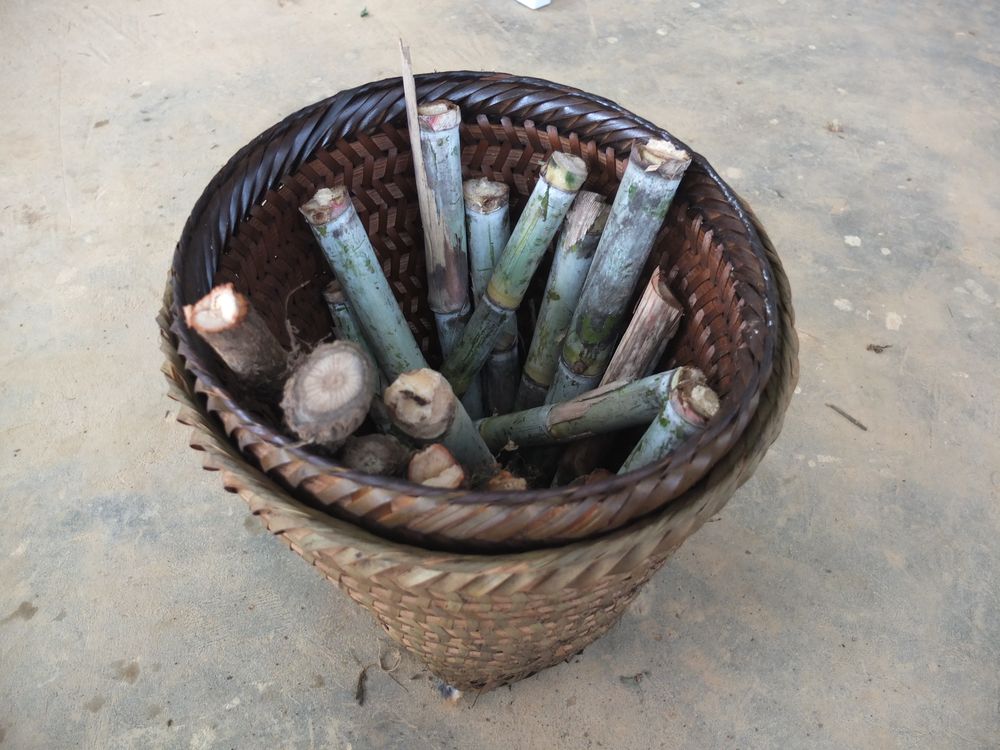
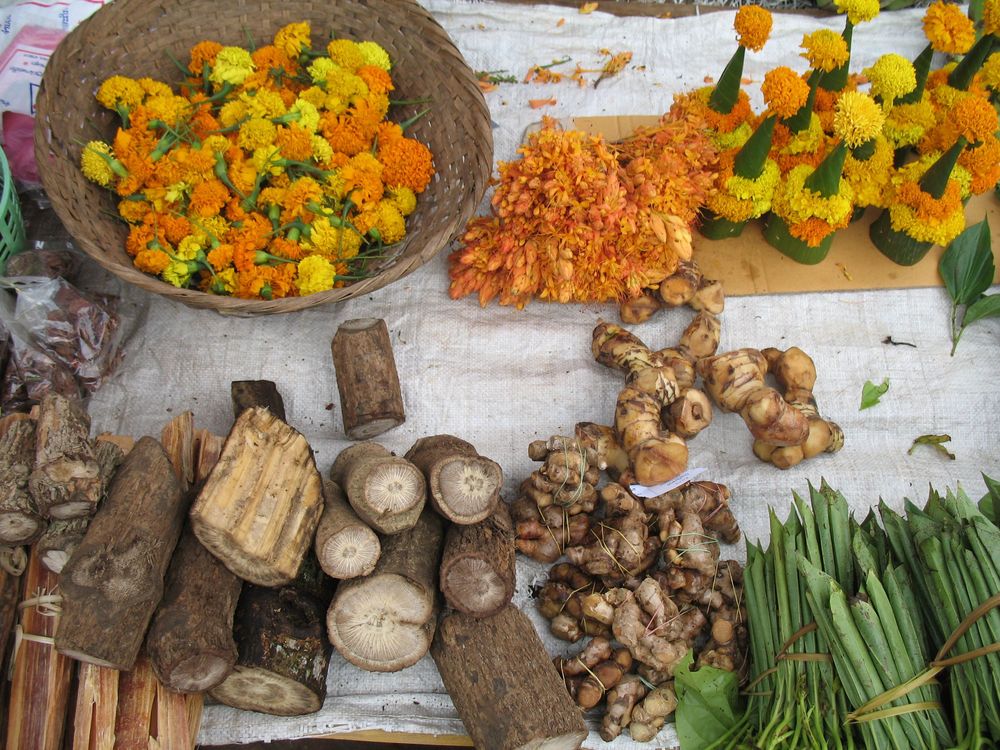
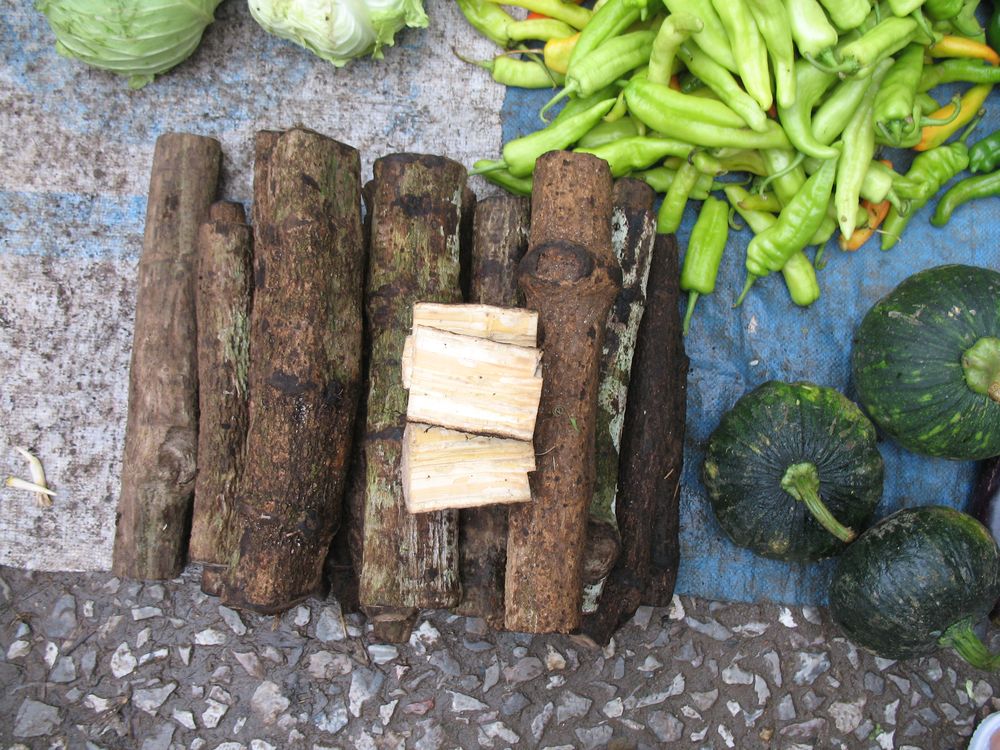
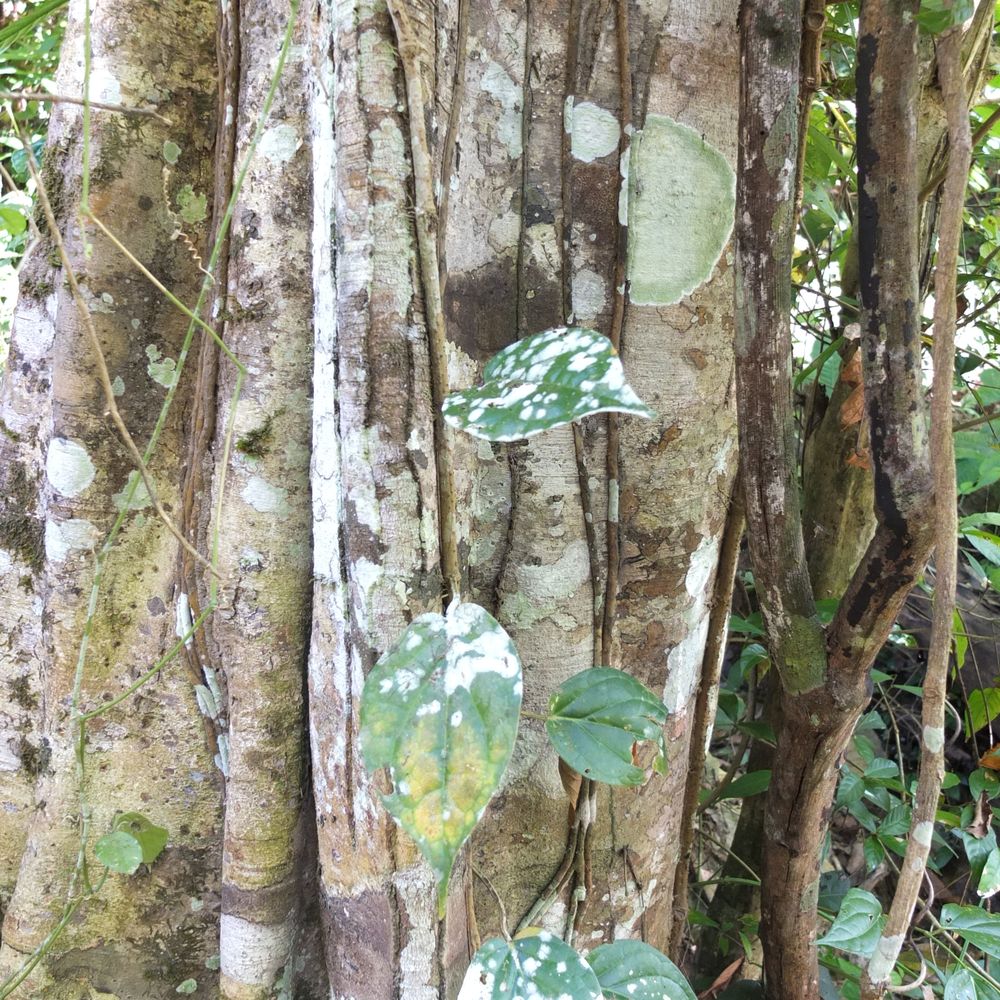
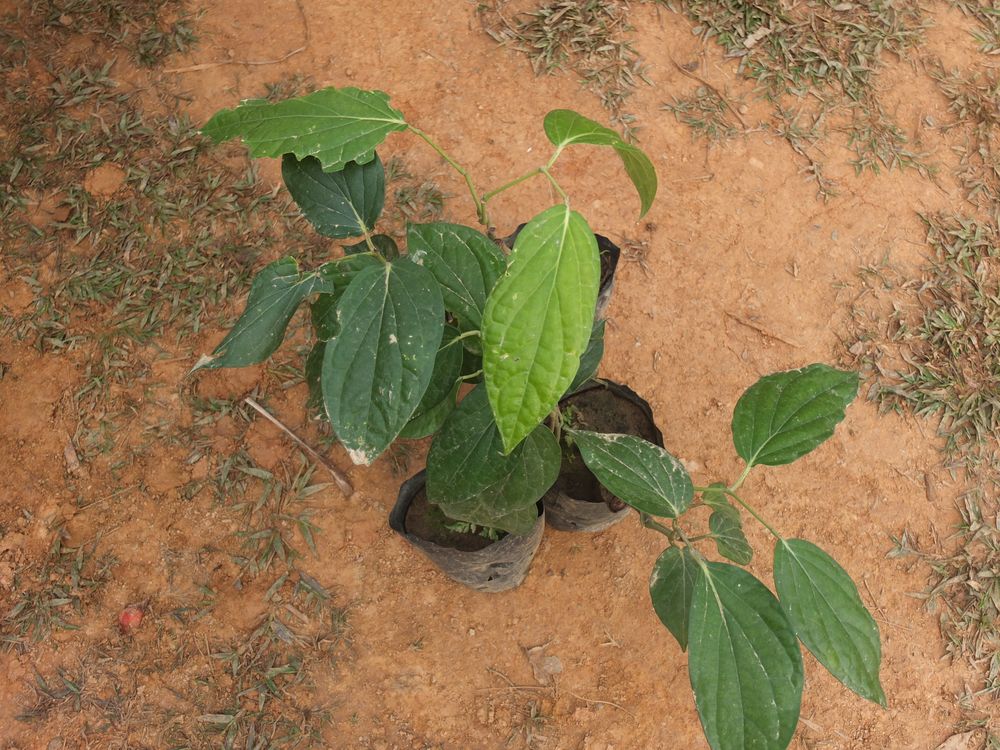
This pepper is a strong liana from the rainforests of northern Laos. Its stems are woody. Its leaves are alternate, oblong, pointed at the tip and heart-shaped at the base. The inflorescence is a spike of about ten centimetres which is then covered with small blackberries.
Few people saw the vine itself, but in Louang Prabang, woody sections of about forty centimetres are sold at the market, where people tell you that they do not know the plant on the ground, which comes from the “jungle”. The stems of this pepper are in fact an essential condiment for o lam, a speciality of the north, a kind of stew with a very particular flavour. Of course, this condiment can also be used in other meat dishes such as carys.
In traditional medicine kheua sa khan is used for “excess phlegm”, i.e. excessive secretions “throughout the body”; it is also considered blood and menstrual medicine, and it is sometimes used in baths to reduce sweating.
Ce poivre est une forte liane des forêts humides du Nord Laos. Ses tiges sont ligneuses. Ses feuilles sont alternes, oblongues, pointues à leur extrémité et en forme de cœur à la base. L’inflorescence est un épi d’une dizaine de centimètres qui se couvre par la suite de petites baies noires.
Peu de personnes ont vu la liane elle-même, en revanche, à Louang Prabang, des tronçons ligneux d’une quarantaine de centimètres sont vendus au marché où l’on vous dit ne pas connaître la plante sur pied qui vient de la « jungle ». Les tiges de ce poivre sont en effet un condiment indispensable au o lam, spécialité du nord, sorte de ragoût à la saveur si particulière. On peut évidemment mettre ce condiment dans d’autres plats de viande comme les carys.
En médecine traditionnelle kheua sa khan est utilisé pour « les excès de phlegme », c’est à dire les sécrétions excessives « dans tout le corps »; elle est aussi considéré comme un médicament du sang et des règles; enfin, on la met parfois dans les bains pour réduire la sudation.










This pepper is a strong liana from the rainforests of northern Laos. Its stems are woody. Its leaves are alternate, oblong, pointed at the tip and heart-shaped at the base. The inflorescence is a spike of about ten centimetres which is then covered with small blackberries.
Few people saw the vine itself, but in Louang Prabang, woody sections of about forty centimetres are sold at the market, where people tell you that they do not know the plant on the ground, which comes from the “jungle”. The stems of this pepper are in fact an essential condiment for o lam, a speciality of the north, a kind of stew with a very particular flavour. Of course, this condiment can also be used in other meat dishes such as carys.
In traditional medicine kheua sa khan is used for “excess phlegm”, i.e. excessive secretions “throughout the body”; it is also considered blood and menstrual medicine, and it is sometimes used in baths to reduce sweating.
Ce poivre est une forte liane des forêts humides du Nord Laos. Ses tiges sont ligneuses. Ses feuilles sont alternes, oblongues, pointues à leur extrémité et en forme de cœur à la base. L’inflorescence est un épi d’une dizaine de centimètres qui se couvre par la suite de petites baies noires.
Peu de personnes ont vu la liane elle-même, en revanche, à Louang Prabang, des tronçons ligneux d’une quarantaine de centimètres sont vendus au marché où l’on vous dit ne pas connaître la plante sur pied qui vient de la « jungle ». Les tiges de ce poivre sont en effet un condiment indispensable au o lam, spécialité du nord, sorte de ragoût à la saveur si particulière. On peut évidemment mettre ce condiment dans d’autres plats de viande comme les carys.
En médecine traditionnelle kheua sa khan est utilisé pour « les excès de phlegme », c’est à dire les sécrétions excessives « dans tout le corps »; elle est aussi considéré comme un médicament du sang et des règles; enfin, on la met parfois dans les bains pour réduire la sudation.


